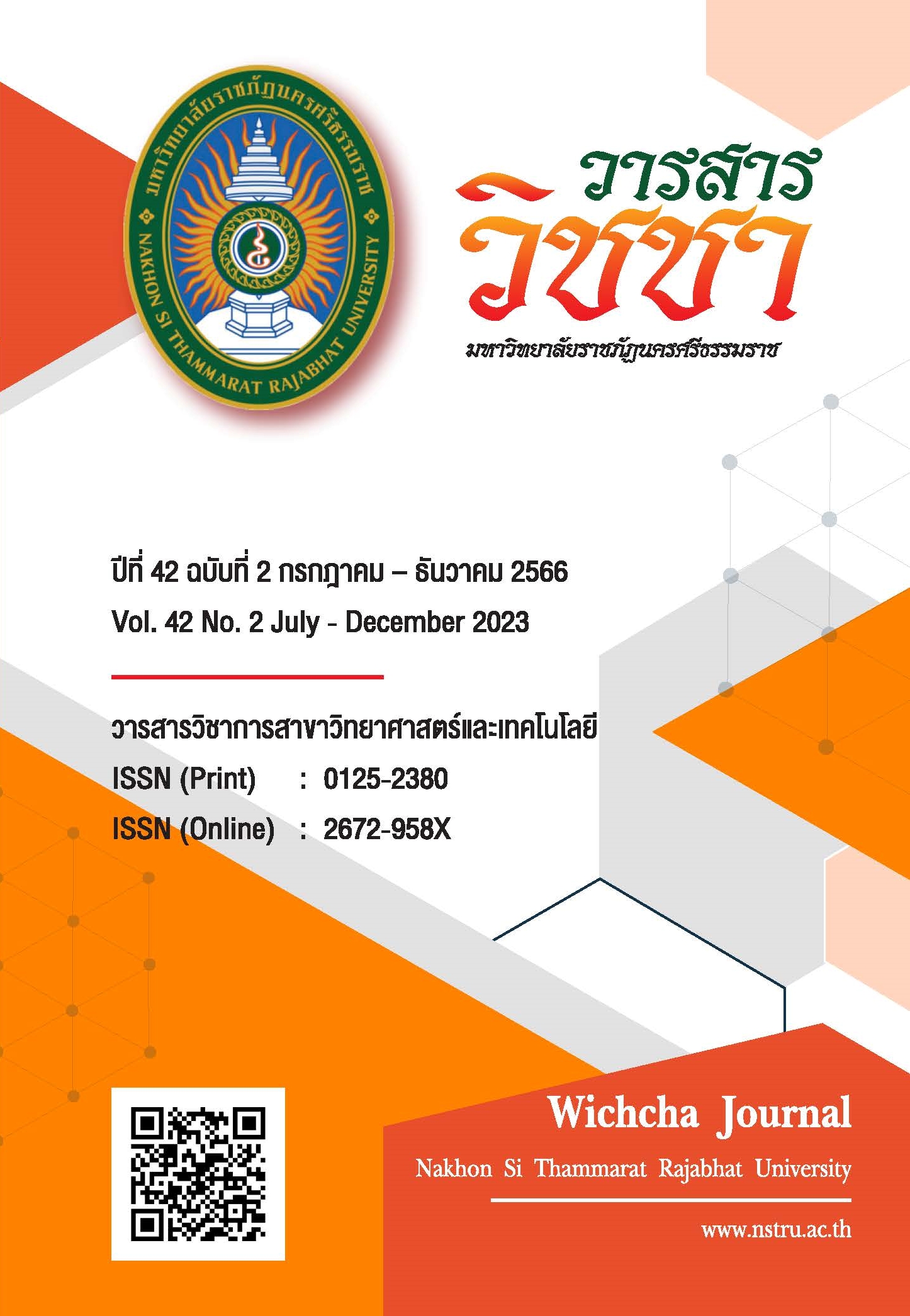Efficiency of Selected Bacteria on Bioremediation of Mercury in Soil
Main Article Content
Abstract
This research was studied the efficiency study of selective microbes to reduce mercury contaminated in soil. This research was examined the physical and chemical properties in the soil and investigated the efficiency of mercury reduction in soil. The experimental design was varied the concentration of mercury rates within 15 days. Soil samples were investigated by gas chromatography (GC) technique and calculated the efficiency of mercury reduction. The results showed that soil properties were as silty in texture and 18 grams per kilograms (g/kg) of organic matter that medium level. Soil pH was 6.56 that weak acid. Regarding mercury contamination reduction, 5 g of selective microbes and 120 milligrams per kilograms (mg/kg) of mercury concentration was found the greatest removal efficiency of mercury at 43.07%. Followed by 5 grams of selective microbes with 240 mg/kg of mercury concentration, could remove an efficiency of mercury at 42.13% of mercury, respectively. Therefore, this research can lead to the management of areas with mercury residues, including reducing heavy metal contamination in the food chain.
Article Details

This work is licensed under a Creative Commons Attribution-NonCommercial-NoDerivatives 4.0 International License.
เนื้อหาและข้อมูลในบทความที่ลงตีพิมพ์ในวารสารวิชชา มหาวิทยาลัยราชภัฏนครศรีธรรมราช ถือเป็นข้อคิดเห็นและความรับผิดชอบของผู้เขียนบทความโดยตรง ซึ่งกองบรรณาธิการวารสารไม่จำเป็นต้องเห็นด้วยหรือร่วมรับผิดชอบใด ๆ
บทความ ข้อมูล เนื้อหา รูปภาพ ฯลฯ ที่ได้รับการตีพิมพ์ในวารสารวิชชา มหาวิทยาลัยราชภัฏนครศรีธรรมราช ถือเป็นลิขสิทธ์ของวารสารวิชชา มหาวิทยาลัยราชภัฏนครศรีธรรมราช หากบุคคลหรือหน่วยงานใดต้องการนำข้อมูลทั้งหมดหรือส่วนหนึ่งส่วนใดไปเผยแพร่ต่อหรือเพื่อการกระทำการใด ๆ จะต้องได้รับอนุญาตเป็นลายลักษณ์อักษรจากวารสารวิชชา มหาวิทยาลัยราชภัฏนครศรีธรรมราชก่อนเท่านั้น
The content and information in the article published in Wichcha journal Nakhon Si Thammarat Rajabhat University, It is the opinion and responsibility of the author of the article. The editorial journals do not need to agree. Or share any responsibility.
References
ชมภู่ เหนือศรี นุกูล กุดแถลง พิทักษ์ นาสมใจ ปิยะ โมคมุล และเชิดชัย สมบัติโยธา. (2561). การปนเปื้อนของโลหะหนักและการจัดการขยะอันตรายโดยการมีส่วนร่วมของชุมชน องค์การบริหารส่วนตำบลโคกสะอาด อำเภอฆ้องชัย จังหวัดกาฬสินธุ์. รายงานวิจัย. มหาวิทยาลัยราชภัฏมหาสารคาม.
นันทวุฒิ จำปางาม. (2561). การฟื้นฟูมลพิษทางดินที่ปนเปื้อนกากของเสียอันตรายจากภาคอุตสาหกรรม. วารสารวิชาการมหาวิทยาลัยอีสเทิร์นเอเชีย ฉบับวิทยาศาสตร์และเทคโนโลยี, 12(2), 97-111.
พัชรี ธีรจินดาขจร. (2554). คู่มือการวิเคราะห์ดินทางเคมี. (พิมพ์ครั้งที่ 3). ขอนแก่น: มหาวิทยาลัย ขอนแก่น.
Chien, M., Nakahata, R., Ono, T., Miyauchi, K. and Endo, G. (2012). Mercury removal and recovery by immobilized Bacillus megaterium MB1. Frontiers of Chemical Science and Engineering, 6(2), 192-197, doi: https://doi.org/10.1007/s11705-012-1284-3.
Hachiya, N. (2006). The history and the present of Minamata disease - entering the second half a century. Japan Medical Association Journal, 49(3), 112-118.
Holmes, P., James, K.A.F. and Levy, L.S. (2009). Is low-level environmental mercury exposure of concern to human health?. Science of the Total Environment, 408(2), 171-182, doi: https://doi.org/10.1016/j.scitotenv.2009.09.043.
Lee, C.S., and Fisher, N.S. (2018). Microbial generation of elemental mercury from dissolved methylmercury in seawater. Limnology and Oceanography, 64(2), 679-693, doi: https://doi.org/10.1002/lno.11068.
Rafique, A., Amin, A. and Latif, Z. (2015). Screening and characterization of mercury-resistant nitrogen fixing bacteria and their use as biofertilizers and for mercury bioremediation. Pakistan Journal of Zoology, 47(5), 1271-1277.
Rua-Ibarz, A., Bolea-Fernandez, E., Maage, A., Frantzen, S., Valdersnes, S., and Vanhaecke, F. (2016). Assessment of Hg pollution released from a WWII submarine wreck (U-864) by Hg isotopic analysis of sediments and cancer pagurus tissues. Environmental Science and Technology, 50(19), 10361-10369, doi: https://doi.org/10.1021/bacs.est.6b02128.
USDA Natural Resources Conservation Service. (2004). Soil survey laboratory methods manual. no. 42 version 4.0. Washington, D.C.: Soil Survey Investigation Report.
Zhao, M.M., Kou, J.B., Chen, Y.P., Xue, L.G., and Fan, T.T. (2021). Bioremediation of wastewater containing mercury using three newly isolation bacterial strains. Journal of Cleaner Production, 299, doi: https://doi.org/10.1016/J.JCLEPRO.2021.126869.


